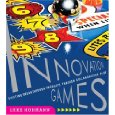 Keynote: Alistair Cockburn comes to bury Agile, not praise it
Keynote: Alistair Cockburn comes to bury Agile, not praise it
The morning keynote starts with a paraphrase of Marc Anthony’s speech for Caesar’s burial. Agile was an upstart, applicable to small co-located teams. The techniques have now become part of the norm and we’re extending the principles to apply to an ever growing area of projects. Alistair goes back to the themes familiar from his writing:
- Software is like an endless cooperative game with only three moves: invent, decide and communicate
- The speed of development is determined by the speed of ideas spreading
- Craft is essential
- Use Lean processes. Lean production techniques can be applied to design processes: limit work in process, keep things flowing…
- The right process depends on the circumstances. Tools like the Theory of Constraints inform us to design the right process.
- Design is knowledge acquisition: we’re learning about the domain and about the solution.
Leveraging Collaborative Tools with Distributed Customer Teams by Luke Hohmann
 Luke has a whole set of Innovation Games to help teams solve problems and be creative. All of these work really well for a co-located team. Two of those, “Buy a Feature” and “Prune the Product Tree” are now available as online tools for remote collaboration.
Luke has a whole set of Innovation Games to help teams solve problems and be creative. All of these work really well for a co-located team. Two of those, “Buy a Feature” and “Prune the Product Tree” are now available as online tools for remote collaboration.
Buy a Feature helps prioritise by giving player a limited budget to spend on features. Each player can’t buy a feature by themselves, so they have to work together to get their product in the backlog. Prune the Product Tree helps creating a product roadmap by letting players add features on a tree, with different functional areas and time horizons. The different trees can then be overlayed to come up with a roadmap that combines the input of the different players.
This was a presentation only, we didn’t get to see the games themselves. To make it perfect I would:
- Show the games “in action” by having several slides that show (sort of stop-motion) how a game sessions runs
- Make the slides a bit simpler, overload them less with information
I’ve bought the Innovation Games book, some light reading on the plane home.
Facilitation Patterns and Antipatterns by Steve “Doc” List
Steve explained the role and attitude of the facilitator: the facilitator is there to help the participants get the result to want, is neutral and does not have or use authority. Then came a number of characters who represent roles people take during meetings. Roles include the “Gladiator”, who fights everything just for the pleasure of the fight, or the “Orator” who likes to hear themselves talk so much that they can’t stop.
We then played in groups: each of us got to randomly pick one at first and later two cards with roles on them. We were told to have a discussion on the topic and play the roles we’d picked. Only facilitators made their role known at the start. At the end of each round we had to guess which round everyone had played. In the first round I got the role “yourself”, so I could switch between different roles I usually take. With the exaggerated roles, each round was a lot of fun. Steve then gave us some facilitation tools:
- Interrupt, ask, redirect, commit
- The starfish
- The circle of questions
- The Margolys wheel
- The Parking lot
More about the patterns, roles, tools and books on Steven’s blog.
A fun and instructive session. To make it perfect I would:
- Have a slightly smaller group: it was hard to hear the conversation with so many conversations going on at the other tables
- Have smaller tables: again, hard to hear each other when you’re sitting far away
- Give the “facilitators” in the game some help or tools to deal with the antipatterns. As the session is structured now, we see the antipatterns in action, then we get facilitation tools to deal with them, but we can’t test the tools and see if they work.
“How to Develop Your Leadership Power Daily: An Agile Approach to Growth” by Chris Avery
Chris explained the Responsibility Model, a six step model of how we react to a problem and (if all goes well) end up taking responsibility for dealing with the problem. That’s hard, because the reactions are built into our emotional brain. We can’t skip any of the steps, but by being aware of them we can move on faster to more productive behaviour. If we want more leadership and more productive behaviour we have to take responsibility.
Games day
Wednesday is games day. Portia and I run
- The Bottleneck Game: Discover ToC, Agile, Lean and Real Options through play (Grand Ballroom A) from 9:00 to 10:30. In the game, we run a simple simulation and then apply the “Five Focusing Steps” to improve the process. Along the way, you can use Agile, Lean and Real Options techniques to improve results.
- The Business Value Game: How to build and use a Business Value Model (Plaza Ballroom B) from 16:00 to 17:30. In the game we run a simulation to experiment with different release strategies. Along the way, you and your team will build up a Business Value Model to get the most value with the least amount of effort.
If you like our games, you can get them from http://www.agilecoach.net and play them in your company, user group or family.
In between our two games, we can go to two more sessions. More about those later.


